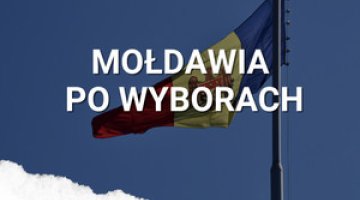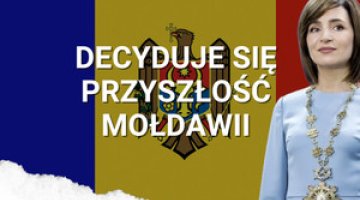A huge anti-government demonstration in Chisinau
On 6th September the largest anti-government protests since the beginning of the 1990s were organised by the pro-European and independent Civic Platform ‘Dignity and Truth’ (DA) which was established in February last year. Approximately 60,000-70,000 protesters called for a ‘return of the appropriated state to its citizens’, for the issue of the embezzlement of approximately US$ 1 billion from Moldovan banks last year to be clarified and for those responsible for it to be punished, for oligarchs to be removed from power, including the leaders of the ruling and formally pro-European coalition parties. The protesters also demanded a snap election, the resignation of President Nicolae Timofti and an amendment to the procedure of electing the head of state to turn it into direct election. A section of the protesters put up approximately 200 tents in front of the government’s building and announced they would pursue their protests until their demands were met. The demonstration was backed by the pro-Russian parties: Igor Dodon’s Party of Socialists and Our Party led by Renato Usatii, their representatives were not there in any significant numbers, though. Both these opposition leaders have announced that they will organise their own protest actions in the near future.
Commentary:
- The scale of the protests was undoubtedly startling for the Moldovan government and it seems it will force the government to take concrete steps in order to alleviate social tension. It may be expected that the government will decide to make certain changes in senior positions in some state institutions. Nevertheless, it is quite unlikely that it will agree to the demands for a snap election or the resignation of the president. In the near future the government will probably adopt a strategy of making minor concessions, hoping that it will help calm the atmosphere in society, and it will try to drag the opposition into lengthy negotiations. This is part of the prime minister’s promises to set up a working group which will consider whether the protesters’ demands are well-founded. It is however quite unlikely that the government will decide to solve the issue of the tent town with the use of force.
- The government have taken steps to minimise the scale of the protests earlier announced. The TV channels owned by Plahotniuc, the oligarch who controls one of the coalition parties – the Democratic Party, has run a campaign in order to discredit the DA, including by pointing to its alleged non-transparent business connections and by drawing attention to the fact that there are proponents of the unification of Moldova with Romania in the party’s ranks. On 3rd September the government made a decision to suspend for two months the increases in the price of gas (by 15.4%) and electricity (by 30-37%) which had been announced in July. The government’s ineffective actions attest to the huge potential for protest in Moldova.
- Despite the fact that since its beginning the DA has emphasised its apolitical nature, at present it is being ever more often stressed that the movement should turn into a political party. There is a dominant conviction among the party’s members that there is no genuine pro-European alternative to the compromised ruling coalition. It cannot be ruled out that if such a political party is successfully established, Maia Sandu, a popular former education minister, could become its face. It is however difficult to clearly assess the chances of a political project of this kind. The DA is a loosely-knit structure that groups together people and organisations with various, sometimes divergent views, and this will constitute a serious problem when attempts to formally consolidate it are made.





